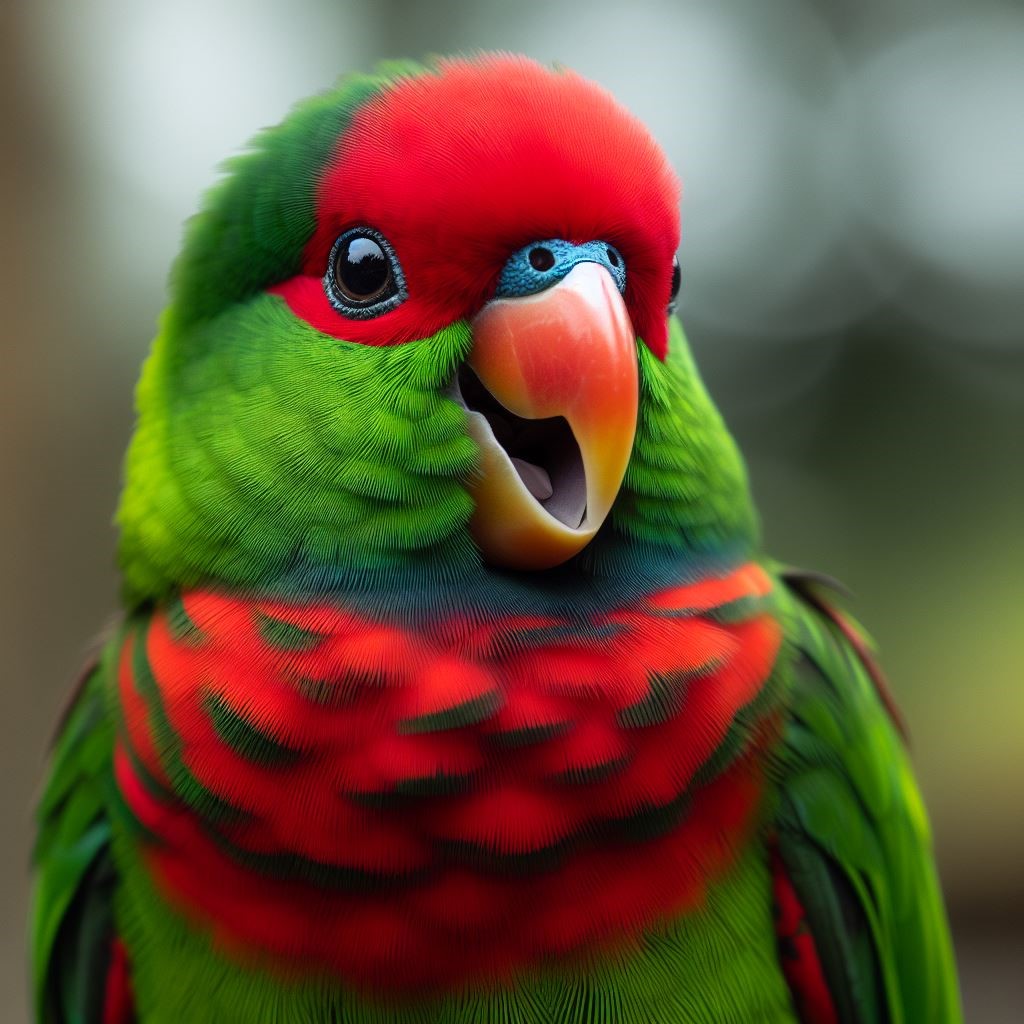The chattering lory, scientifically known as Lorius garrulus, is a stunning parrot species native to Indonesia. Its vibrant plumage, playful personality, and unique vocalizations make it a popular choice among bird enthusiasts. In this article, we will explore the fascinating world of the chattering lory, from its physical characteristics to its behavior and care requirements.

The chattering lory is a medium-sized parrot known for its striking appearance and lively nature. Its body is predominantly red with black markings on the wings and back, and it has a bright blue belly and tail. These colors, combined with its playful antics, make it a joy to observe and interact with.
Physical Characteristics
Chattering lories typically measure around 12 inches (30 cm) in length and weigh between 6 to 7 ounces (170 to 200 grams). They have a strong, curved beak that is well-suited for cracking open nuts and seeds. Their feet are zygodactyl, meaning they have two toes pointing forward and two pointing backward, which helps them grip branches securely.
Habitat and Distribution
Chattering lories are found in the rainforests and lowland forests of Indonesia, particularly on the islands of New Guinea and nearby smaller islands. They inhabit dense, tropical forests where they can find plenty of fruit-bearing trees and flowering plants, which are essential parts of their diet.
Diet and Feeding
In the wild, chattering lories primarily feed on nectar, pollen, fruits, and seeds. In captivity, they should be offered a diet that mimics their natural food sources, including a variety of fruits, vegetables, and commercial nectar mixes. It’s important to provide fresh food daily and ensure they have access to clean water.
Behavior and Temperament
Chattering lories are known for their playful and social nature. They are often seen interacting with other birds and engaging in various activities such as playing with toys and exploring their environment. They are also known for their acrobatic abilities, often hanging upside down from branches while feeding or playing.
Vocalizations
As their name suggests, chattering lories are quite vocal. They produce a variety of sounds, including chirps, whistles, and squawks. They are also capable of mimicking human speech and other sounds they hear in their environment, making them entertaining companions.
Captivity and Conservation
Due to their striking appearance and engaging personalities, chattering lories are popular in the pet trade. However, their popularity has led to a decline in wild populations, primarily due to habitat loss and illegal trapping for the pet trade. It’s important for potential owners to research the care requirements of these birds and ensure they are purchasing from reputable breeders.
Common Health Issues
Like all parrots, chattering lories are susceptible to certain health issues, including respiratory infections, feather plucking, and beak and feather disease. Providing a balanced diet, regular veterinary check-ups, and a clean environment can help prevent these issues.
Interaction with Humans
Chattering lories are known for their ability to bond with humans. With proper socialization and training, they can become affectionate companions. However, they require a significant amount of time and attention from their owners to thrive.
Conclusion
In conclusion, the chattering lory is a beautiful and fascinating parrot species that captivates all who encounter it. From its stunning plumage to its playful demeanor, this bird is truly a delight to behold. However, it’s essential to remember that owning a chattering lory is a significant commitment that requires time, effort, and resources. By providing these birds with the care and attention they need, we can help ensure their continued survival and enjoyment for generations to come.
FAQs about Chattering Lories
- Are chattering lories good pets?
- Yes, chattering lories can make excellent pets for the right person. They are social, intelligent birds that require a lot of attention and interaction.
- Do chattering lories talk?
- While they are not known for their talking ability like some other parrot species, chattering lories can learn to mimic sounds and words with proper training.
- How long do chattering lories live?
- In captivity, chattering lories can live up to 20 years or more with proper care.
- Do chattering lories require special care?
- Yes, chattering lories have specific dietary and socialization needs that must be met to ensure their health and happiness.
- Are chattering lories endangered?
- While not currently classified as endangered, chattering lories are at risk due to habitat loss and illegal trapping. It’s essential to support conservation efforts to protect these birds in the wild.






